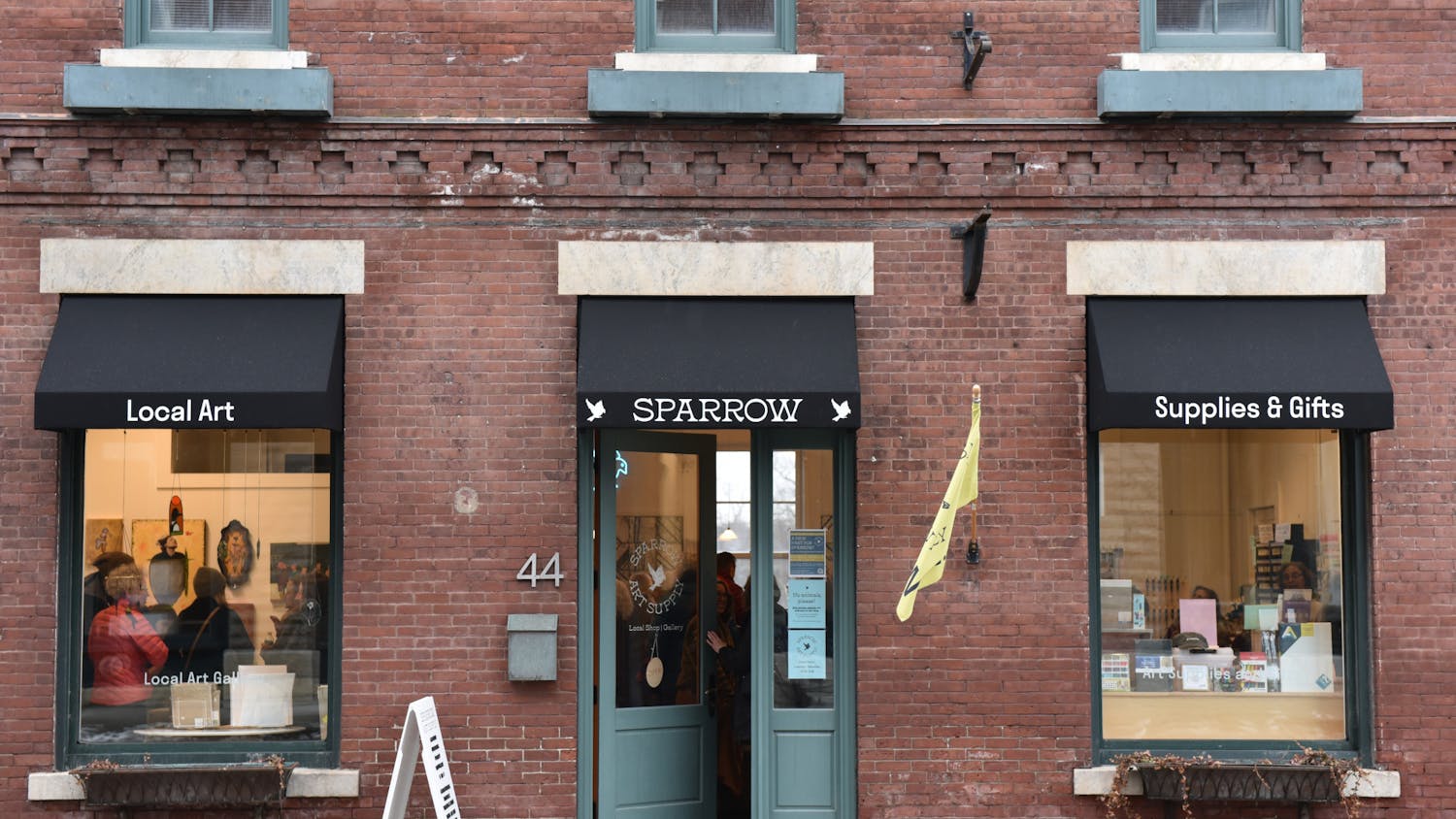With school back in session, the student tides across campus have returned. The hushed conversations and echoing footsteps in the Tormondsen Great Hall of McCardell Bicentennial Hall rapidly build into a crescendo of babbling voices as students flood out of classrooms between class periods. Just as quickly, the quiet returns as the students flow out the door or down the hall to their next class.
This ebb and flow brings a certain sense of regularity and rhythm to the days. Its consistency is comforting.
But these tides are not quite the same from year to year. Expand the lens and it quickly becomes apparent that the tides of students that frequent Bicentennial Hall are rising. According to data provided in the annual Fact Books released to the public by the Office of Planning and Assessment, the number of science majors on campus rose 6.9 percent between the fall of 2001 and the fall of 2012. That statistic represents a 114 person increase in the number of declared natural science majors (including environmental studies-conservation biology, environmental studies-chemistry, and neuroscience).
To put that increase in perspective, during that same 12-year period the total number of declared majors (including joint and double majors) increased by twenty students.
Enrollment increased by 73 students between the fall of 2003 and the fall of 2012. Looking at the numbers, it is as though every single additional student the college admitted declared a major in the natural sciences, and then forty one students who formerly would have declared in another category changed their minds and declared natural science majors.
So, what is driving that increase?
Dean of Curriculum and Director of the Sciences Bob Cluss attributes the rise in part to an increased awareness of the College’s strength in the sciences within the applicant pool. His sense is that more students are applying to Middlebury and arriving on campus with the sciences in mind.
“I think that there are more students that are entering the top of the funnel,” Cluss said. “And there are certainly more students coming out the bottom of the funnel and winding up here in our classes, and faculty in the sciences are excited about this.”
Biochemistry, molecular biology and biochemistry (MBBC), neuroscience and mathematics have seen the largest jump in the number of declared majors. In the fall of 2001, there were 19 neuroscience majors and now, according to Professor of Biology and Director of the Neuroscience Program Tom Root, there are already over 100 declared neuroscience majors in total this fall. Other departments have seen more moderate increases in the last twelve years, but increases nonetheless.
Departments that appear to be flagging in the number of declared majors are computer science and biology, but those numbers are deceptive. When the number of environmental studies-conservation biology students is taken into account, the number of declared majors in the biology department increases by 17 percent compared to 12 years ago. The computer science department is so overwhelmed with interest in introductory-level classes they have hired additional faculty.
The rise in the number of declared natural science majors parallels an increase in the number of students enrolled in natural science classes. According to data provided by Associate Professor of Physics and Chair of the Physics Department Noah Graham, the number of students enrolled in physics courses jumped after the completion of McCardell Bicentennial Hall. The six-year average of physics enrollment pre-Bicentennial Hall was 367. The average number of students enrolled in physics courses in the twelve years since the science building was completed is 498 students.
It was an influence for Deirdre Sackett, ’13, a neuroscience major now studying drug addiction and decision-making in rats at the University of North Carolina at Chapel Hill. Sackett wrote in an email that, “BiHall is a beautiful, state-of-the-art facility.”
It is also tied to an investment by the College in high-quality science faculty; this year the college hired five new faculty members within the sciences. For Sackett, the accessibility of research opportunities and faculty was key.
“Undergraduates receive so much attention from professors in the course of their research - something that is unheard of at large research institutions,” Sackett wrote.
“I owe my aptitude as a neuroscientist to Middlebury’s neuroscience program and the amazing professors that helped me along the way.”
“I wanted a small school, a good community feel,” wrote Hannah Newman ’13 in an email. “I wanted to be able to ask my professors questions in class, have small labs, and feel comfortable going to office hours and saying hello in the hallways. Looking back, I suppose that I saw being a natural science major at a place like Middlebury to be a good thing.”
However, for Alison Cook ’16, the pull was neither the faculty nor the infrastructure.
“It really came down to the environment I wanted to be in, and the type of people I wanted to be surrounded by,” Cook said. “I think sometimes as scientists we get so bogged down in our work that we fail to look at things globally or even holistically. At a school like Middlebury, everyone has a diverse set of interests that they bring to the table.”
Perhaps, the College has become a more attractive place to study the natural sciences precisely because it is a liberal arts college, and not a research university or a technical institute. Or perhaps, as Cluss commented, the upswing in science majors is part of a larger nationwide trend. Regardless of the driving force, it is apparent that the College has noticed.
“We are still looking to grow our science faculty a little bit next year,” Cluss said. “We’re adding a position in both physics and in chemistry and biochemistry. The chemistry and biochemistry position will enable us to teach smaller sections in some of our lower level courses, which we see as a way to improve the pedagogy and to create more options for our students as they move through the major.”
Having been at the college since 1986, Cluss has seen the potential for some major growth in the science departments throughout the years.
“For those of us that have been here for 25 years it’s really been exciting. We’ve all worked hard for this,” he said.
Science Spotlight: Increasing Interest in Science
Comments



